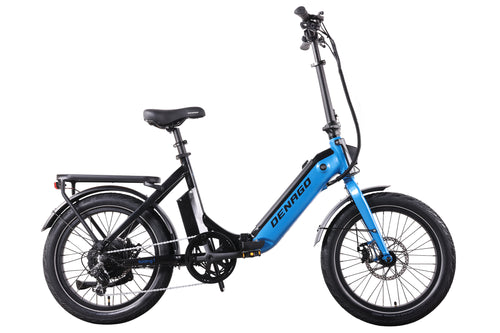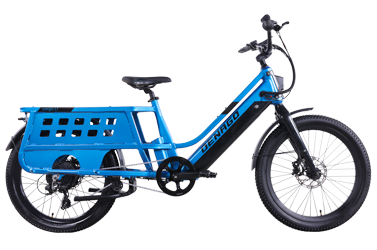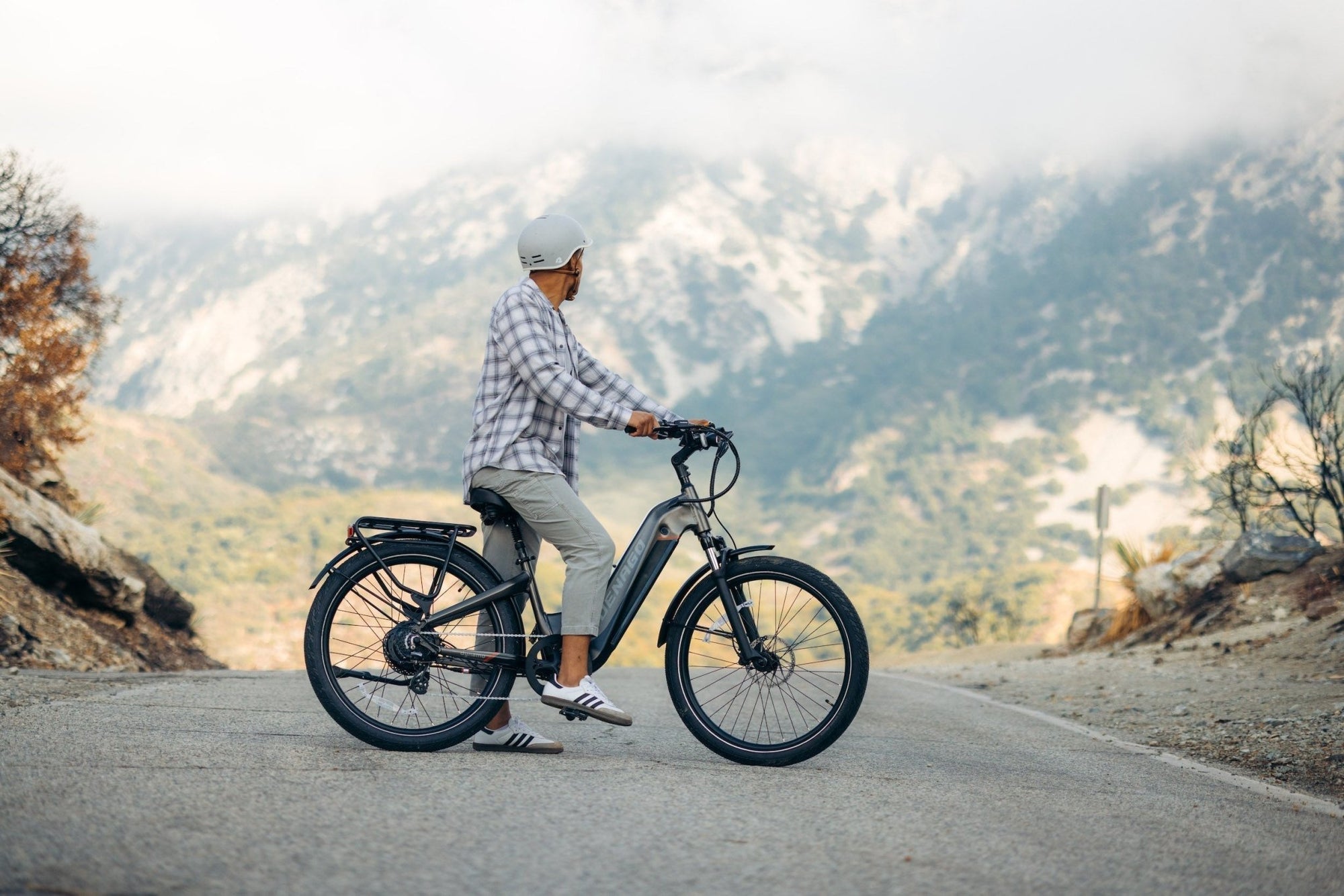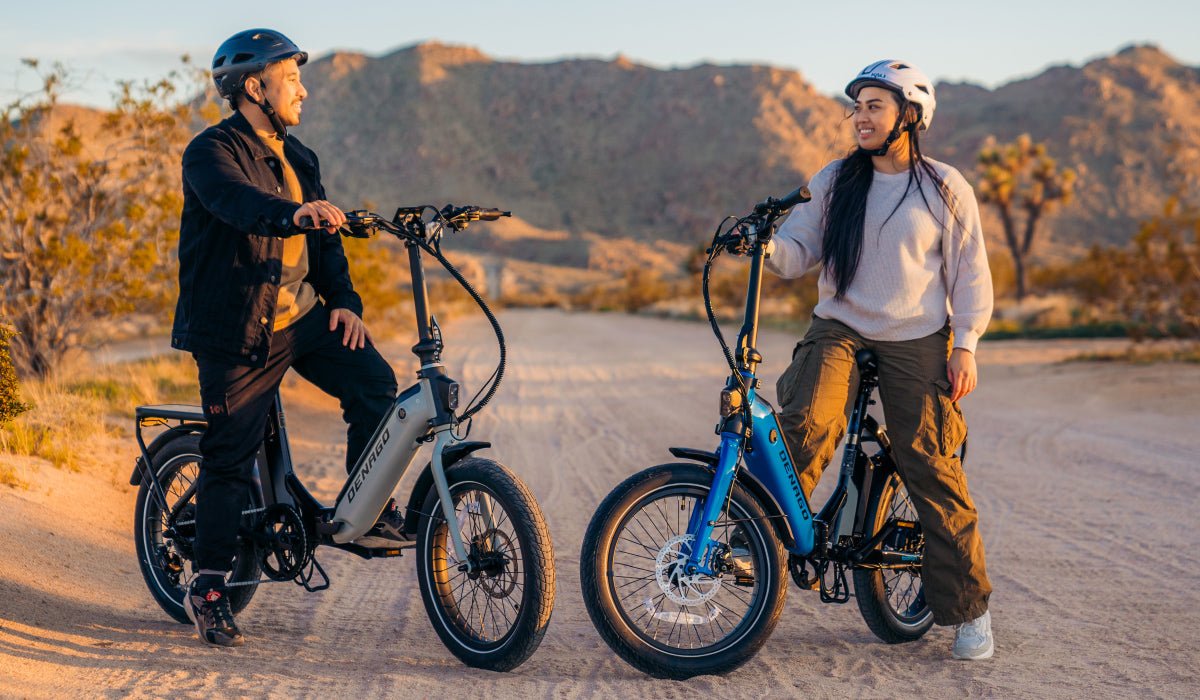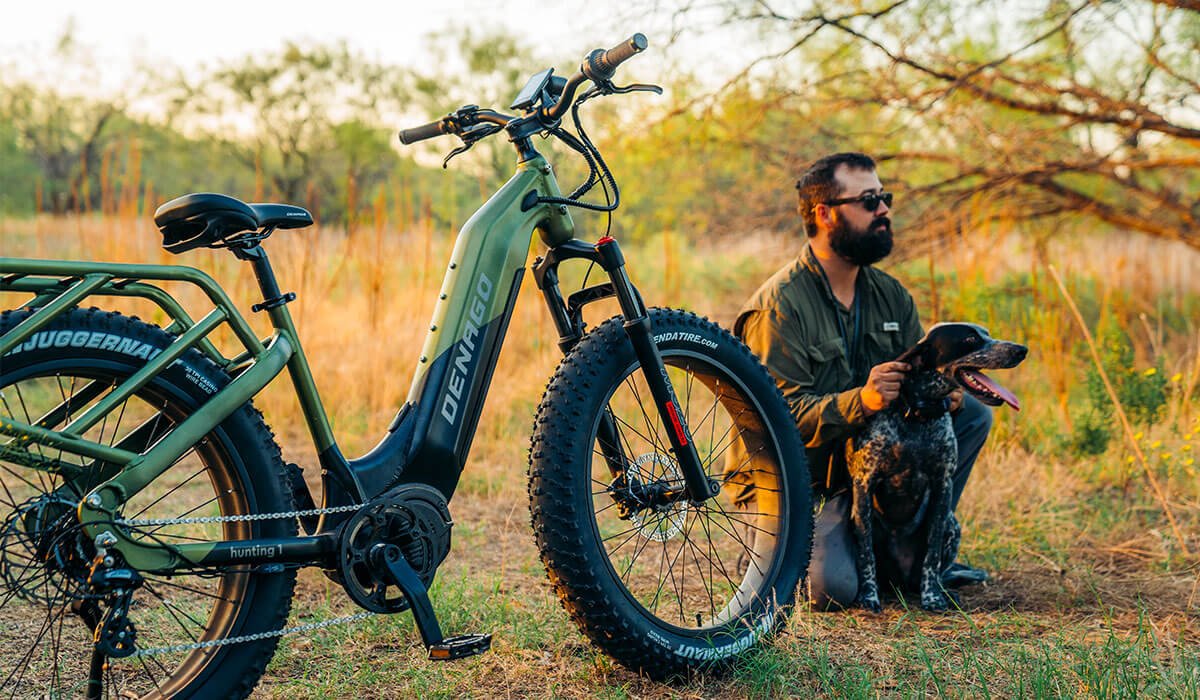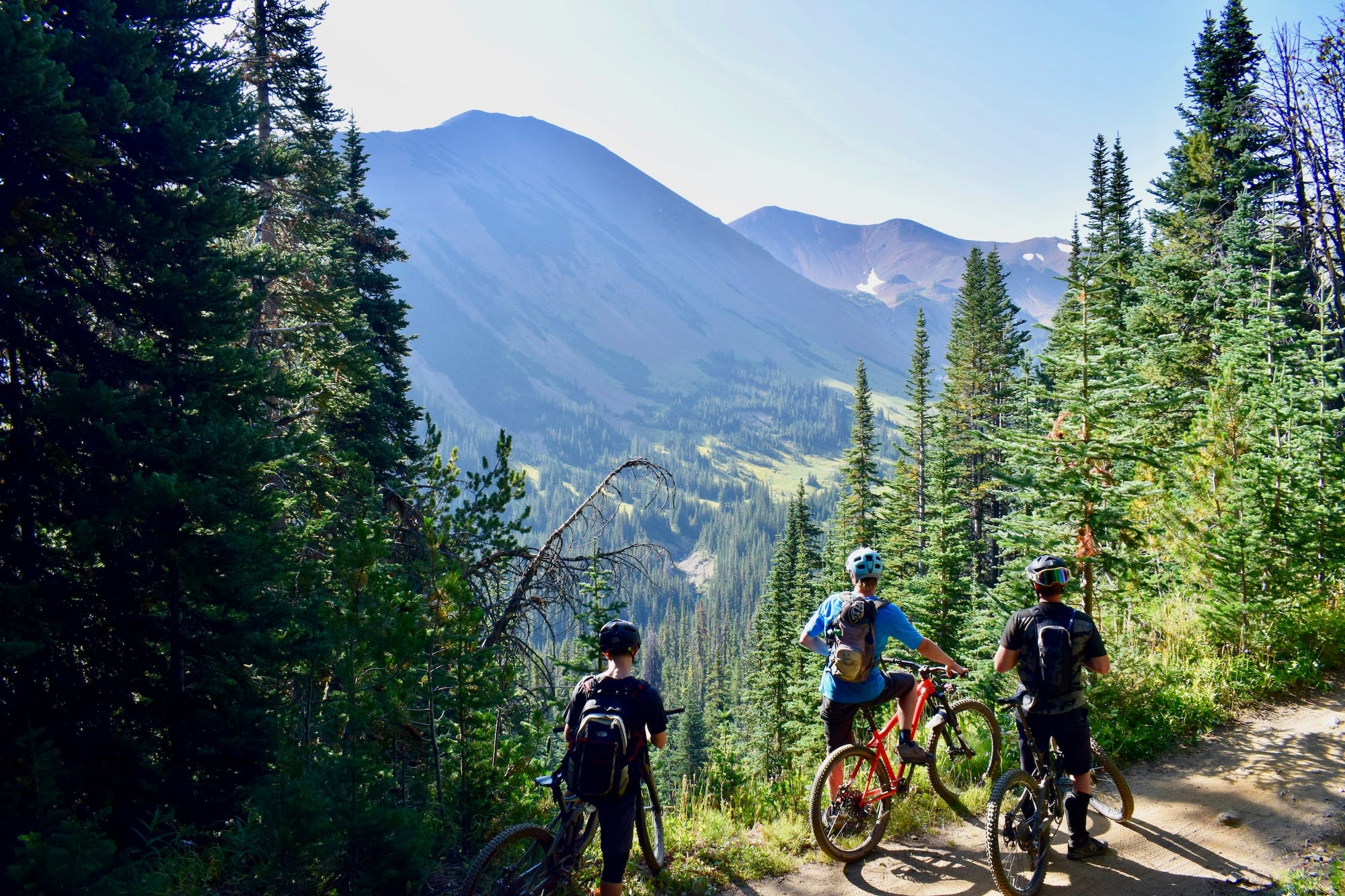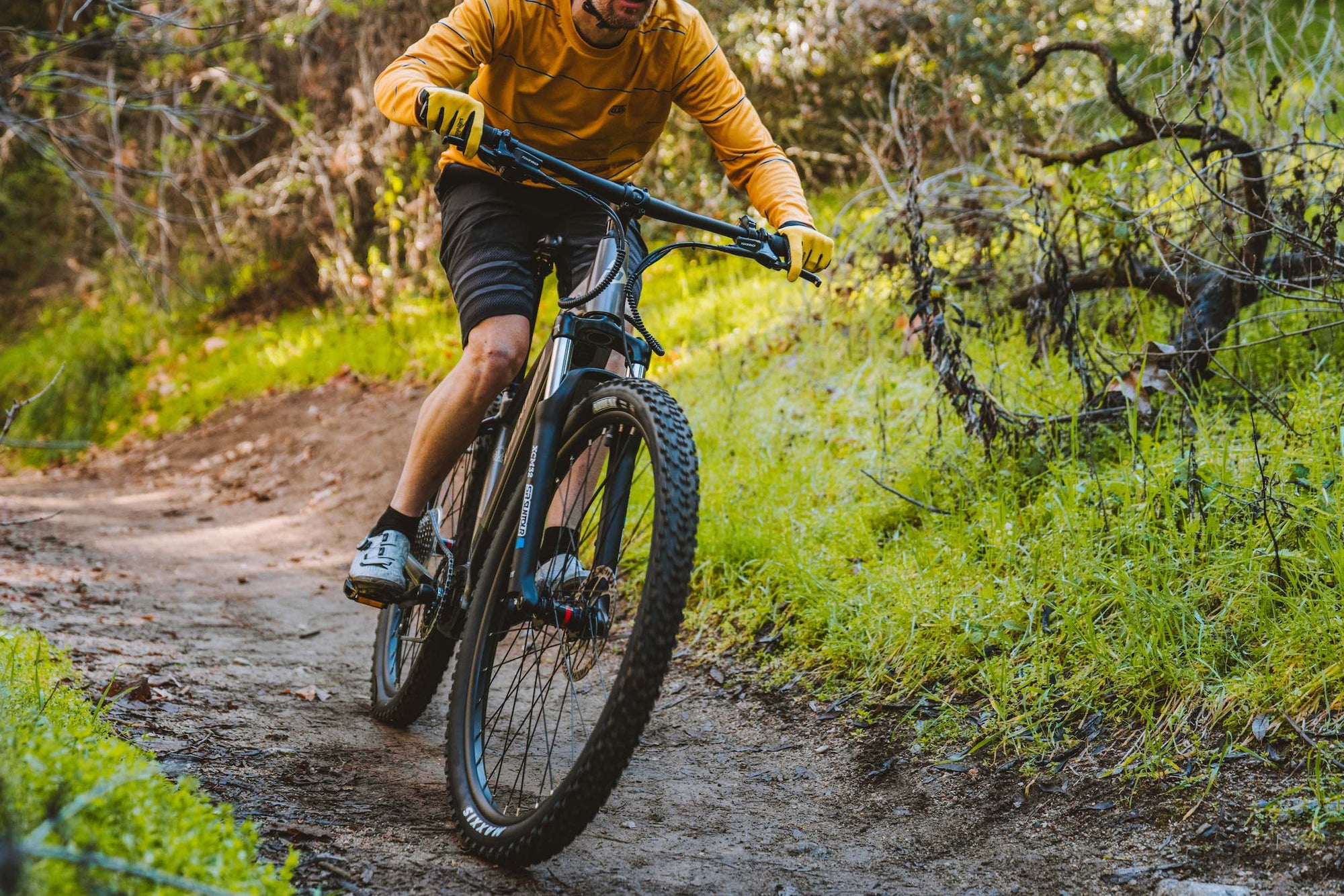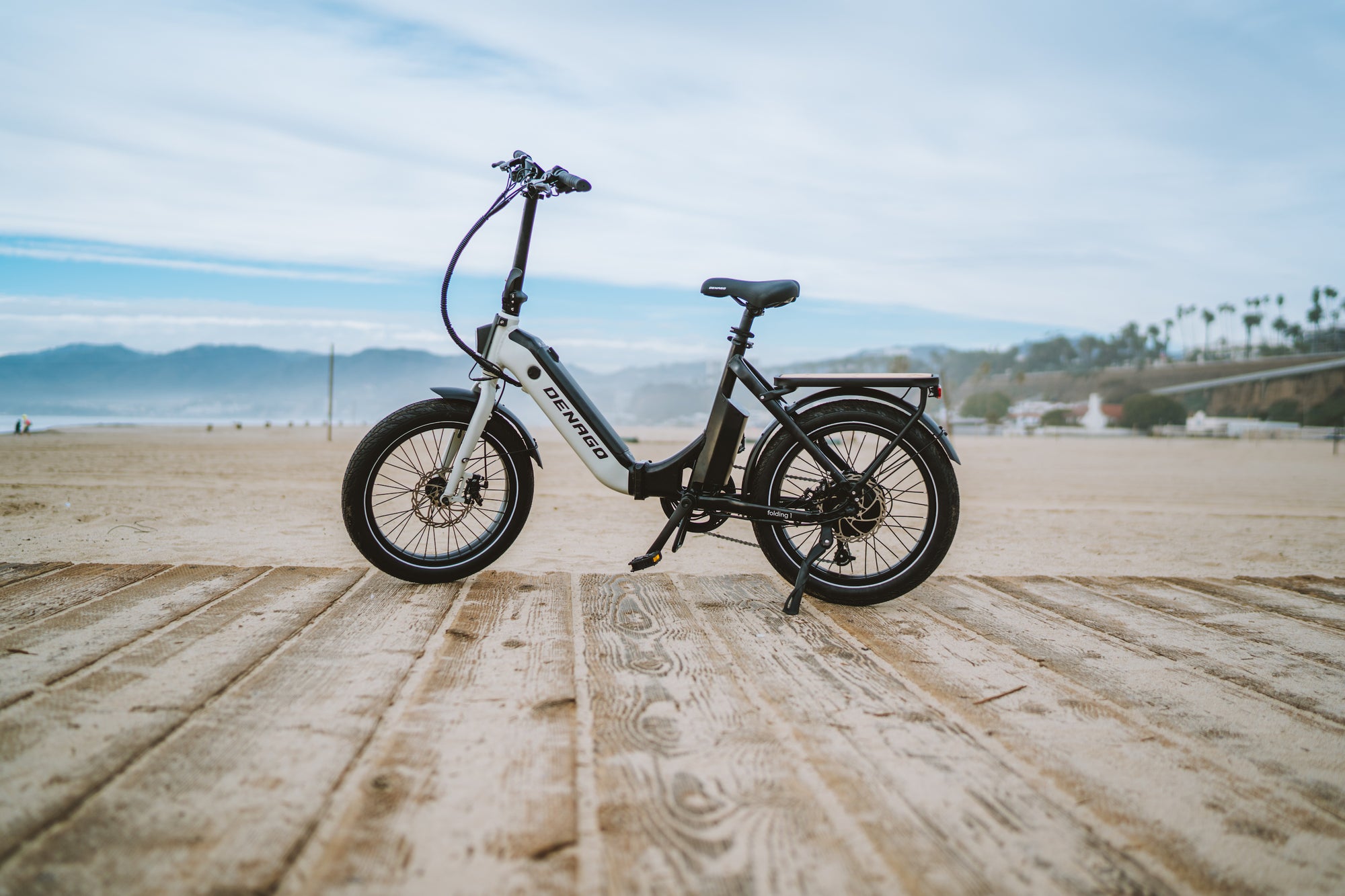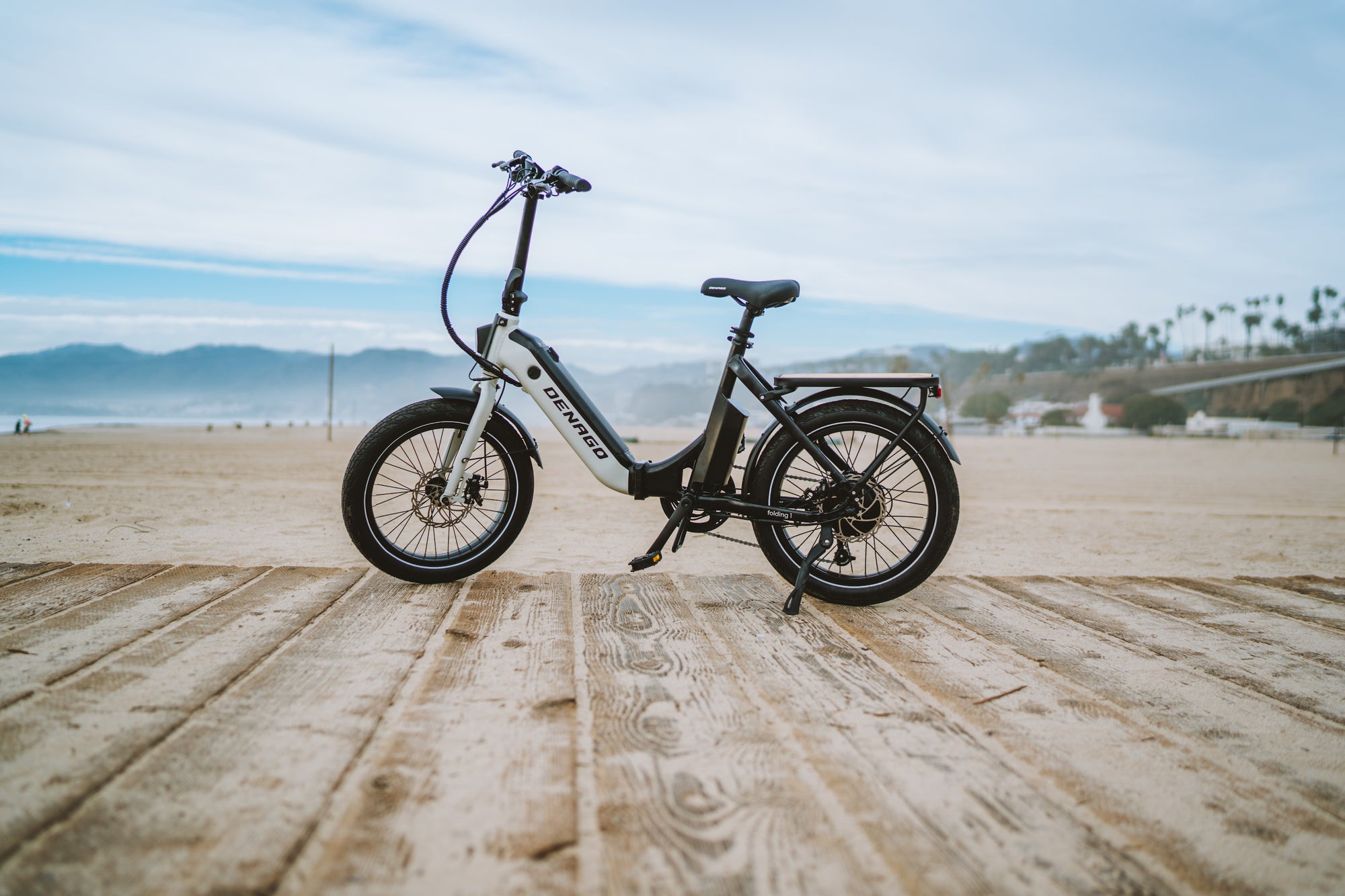Riding an electric mountain bike is a lot of fun filled with adventure and challenges and with that fun comes the responsibility of being a good trail user. As an eMountain biker it is important to be respectful of other trail users such as hikers, equestrians, and other mountain bikers. By being a friendly and respectful rider you can set an example of being a good eMTB ambassador to help with current and future trail access.
In this article we will review the rules and best practices for riding an electric mountain bike. Electric mountain bikes (or "eMTBs") like Denago's eXC1 and eXC2 models are designed for riding challenging off-road trails, singletrack, and fire roads. Because these types of trails can be steep, narrow, and are often shared with other trail users including horses, hikers, and other cyclists, trail etiquette is critical.
The guidelines generally follow the same principles as regular mountain bikes, with a few additional considerations. Here are some specific guidelines for eMTB riders:
Know the rules
Local regulations and policies: Familiarize yourself with local regulations and trail policies regarding electric bike use. Some trails and pathways may have specific rules or restrictions for motorized vehicles, that may include electric bikes. Others may restrict access to only certain types of eBikes.
Please respect these guidelines to maintain a good relationship with the land managers and other trail users.
Ride appropriate trails: Ride eMountain bikes only on trails where they are permitted. Some trails may have restrictions on motorized vehicles, which may include all electric bikes or just certain classes of eBikes. For example, in some situations Class 1 may be allowed but Classes 2 and 3 may not be.
The most common restriction you'll encounter is that eBikes are permitted, but only the Class I type is allowed. Class I eBikes provide pedal assist at up to 20 MPH, and do not have a throttle.
Use trail maps: There are trail maps from Trailforks, Mountain Bike Project, and People for Bikes that have eBike filters to help you find trails and routes that are open to electric bikes. Here is an article with more ideas on finding places to ride your electric mountain bike. These tools give you good data so you don't have to guess.
Be aware of directional trails: Additionally, some trails are only intended to be ridden in a specific direction to avoid user conflict. For example, some trails are designed to be ridden in the downhill direction only, so make sure you don’t ride up the trail! You may also find some trail systems where a loop is always ridden counterclockwise, or always ridden clockwise. Some communities even mix it up, switching the allowed direction based on the day of the week. Follow these directional signs when posted to reduce the risk of head-on collisions.
Respect pedal-assist modes: If your electric bike has different power modes or levels of assistance, be aware of your speed and power output. Use lower assistance levels or adjust your speed in crowded areas, on shared trails, or when passing other users to maintain control and ensure the safety of everyone around.
Communicate your presence: Just like regular mountain bikes, announce your presence well in advance when approaching or passing other trail users. Use a bell, horn, or friendly voice to alert them to your presence. You may have to be extra loud to communicate with other trail users that are using headphones.
Yield appropriately: Give the right of way to hikers, runners, equestrians, and other mountain bikers who are climbing. It's hard to get moving again on steep, uphill trails, which means that downhill riders should always yield to uphill riders! The only exception is if you're riding on dedicated, marked trails intended for downhill use only.
Slow down or stop as needed, allowing other riders to pass safely and let them know how many total riders are in your group so they know what to expect. Be respectful and courteous, understanding that eMTBs may have a higher speed potential than traditional bikes. There are more details on yielding later in this article.
Pass with care: When overtaking other trail users, slow down and announce your intention to pass politely. Choose a safe and appropriate moment to pass, ensuring there is enough space and visibility. Give ample room to the person you are passing, and avoid startling them. Using a bell is a friendly way to announce your presence.
Control your speed: Maintain a safe and controlled speed at all times, considering the capabilities of your eMTB. Be aware of the increased speed and power that electric bikes can provide and adjust your riding accordingly, especially on descents and/or technical sections. Ride at a safe speed that allows you to react to obstacles, other trail users, and changing trail conditions. Slow down in crowded areas, blind corners, or when approaching intersections.
Minimize trail impact: If there has been a lot of rain or snow recently and the trails are very wet then it is best to wait to ride until there are dryer conditions to prevent ruts in the trails. Also, avoid excessive braking and skidding because it can cause erosion and kick up dust that is a nuisance to other trail users. Skidding is an indicator that you're out of control. If you can't ride a trail without skidding, work on improving your skills first then return to give it a try.
Do not cut switchbacks or create shortcuts that can damage the environment and cause drainage problems. Make sure you stay on designated trails and avoid “social trails”. Some social trails probably have not been designed for proper drainage and avoidance of archaeological sites, wildlife habitat, and sensitive plant life.
Observe trail closures: Observe trail closure signs and follow any instructions given by trail authorities. Some trails may be closed for maintenance, restoration, or due to hazardous conditions. Riding on closed trails can cause further damage and harm to the environment and it could put yourself in a dangerous situation.
Leave no trace: Pack out all your trash and dispose of it properly. Avoid littering or leaving any trace of your visit. Respect the natural environment, wildlife, and vegetation by not disturbing or damaging them.
Be respectful of wildlife: Observe and appreciate wildlife from a distance, avoiding any actions that may disturb or harm them. Yield to animals on the trail and give them the right of way.
Be a positive ambassador: Be courteous, friendly, and considerate to other trail users. Help create a positive image for electric mountain bikers by following the rules, practicing good trail etiquette, and engaging in friendly interactions.
eMTBs and Hikers
Interactions between mountain bikers and hikers on the trail should prioritize safety, respect, and courtesy. Here are some guidelines to ensure a positive experience for both groups:
Yield to hikers: As a mountain biker, it is your responsibility to yield to hikers. Slow down or stop if necessary to let them pass safely. Give them the right of way and be prepared to make way for them on the trail.
Communicate your approach: When approaching hikers from behind, alert them to your presence in a friendly and non-startling manner. Use a bell, call out, or politely say "passing on your left/right" to let them know you are coming. Give them sufficient time to prepare and move aside if necessary.
Reduce your speed: Slow down when passing hikers to minimize any potential risks or discomfort. Be prepared to adjust your speed according to trail conditions, visibility, and the comfort level of the hikers. Keep in mind that hikers may have limited awareness of your speed and need extra time to react.
Pass with care: When passing hikers, provide ample space and avoid crowding or startling them. Choose a safe and appropriate moment to pass, considering the width of the trail and any potential obstacles. Be patient, as hikers may need time to find a suitable spot to step aside.
Be friendly and courteous: Greet hikers with a friendly smile or greeting as you pass by. Polite and positive interactions help foster a respectful trail community and contribute to a pleasant experience for all.
Be flexible: Remember, every trail and situation may be different, so it's important to adapt and respond accordingly. Patience, communication, and a willingness to share the trail go a long way in creating a harmonious environment for both mountain bikers and hikers.
eMTBs and Horses
When encountering horses while mountain biking, it's important to take extra precautions and follow specific guidelines to ensure the safety of both riders and horses. Mountain bikers always yield to equestrians on the trail. Here are some tips for interacting with horses on the trail:
Slow down and communicate: Reduce your speed and approach horses cautiously. Communicate your presence by speaking in a calm voice, allowing the horse and rider to be aware of your presence as you come to a stop with enough distance to not spook the horse.
Ask for guidance: If you're unsure about how to proceed or if the horse rider requests you to do something specific, ask for guidance. They may ask you to move to a specific side of the trail or dismount temporarily until they pass. Follow their instructions to ensure everyone's safety.
Give horses space: Horses can be easily startled by sudden movements or loud noises. When approaching or passing horses, give them a wide berth and pass at a slower speed. Maintain a respectful distance to avoid spooking them.
Be patient and calm: Horses may need extra time to assess the situation and feel comfortable with your presence. Remain patient and allow them to pass at their own pace. Avoid sudden or aggressive movements that could startle the horse.
Pass with care: If you need to pass a horse from behind, communicate your intention in a friendly and calm manner. Slow down, speak softly, and wait for the rider's acknowledgement before proceeding. Give them ample space to maneuver and pass safely.
Control your bike: Maintain control of your bike at all times, especially when near horses. Avoid sudden acceleration or braking, as the noise and motion can startle the horse. Keep a steady and predictable pace to minimize any potential disruptions.
Remember, some equestrians may have different preferences or specific requests when it comes to sharing the trail. Always be courteous, communicate, and follow their instructions to ensure a positive and safe trail experience for everyone.
eMTBs & Other Mountain Bikers
When encountering other mountain bikers, whether they are riding uphill or downhill, it's important to prioritize safety and respect on the trail. Here are some guidelines for interacting with uphill and downhill mountain bikers:
Yield to uphill riders: Downhill riders should yield to those climbing uphill. Uphill riding requires more effort, and it's harder for riders to maintain momentum, maneuverability, and balance. The only exception is dedicated, marked and signed trails that are intended to only be ridden in the downhill direction. The downhill rider yields to the uphill rider on all two-way or unsigned trails.
Communicate and be patient: Signal your intentions to the uphill rider with a friendly greeting or by communicating that you will yield. Slow down and be patient while waiting for them to pass.
Find a safe spot to yield: If you are riding downhill, look for a wide section of the trail where you can safely stop and let the uphill rider pass. Make sure you are visible to them and give them enough space to continue their climb without obstruction. If you encounter an uphill rider and there is no suitable place for them to pass easily, consider dismounting temporarily and stepping off the trail to create a wider path.
Passing an uphill rider: If you are riding uphill and want to pass another mountain biker let them know well in advance that you would like to pass with a friendly greeting. Be patient and let them find a good spot to let you ride past them.
Remember, trail conditions and specific guidelines may vary in different locations, so it's important to be aware of local rules and regulations. Respect, communication, and cooperation between uphill and downhill riders contribute to a safer and more enjoyable mountain biking experience for everyone involved.
Being a Good eMountain Biker
The purpose of maintaining good trail etiquette is to promote good will between trail users so that we can all enjoy a good day on the trails. It's important to be a good electric mountain bike ambassador so that we can maintain and gain more access to trails and pathways.
While this may seem like a lot to remember, as you ride more and more trail etiquette becomes second nature and you won’t have to think about it much at all.
Enjoy your rides!
-Pete







